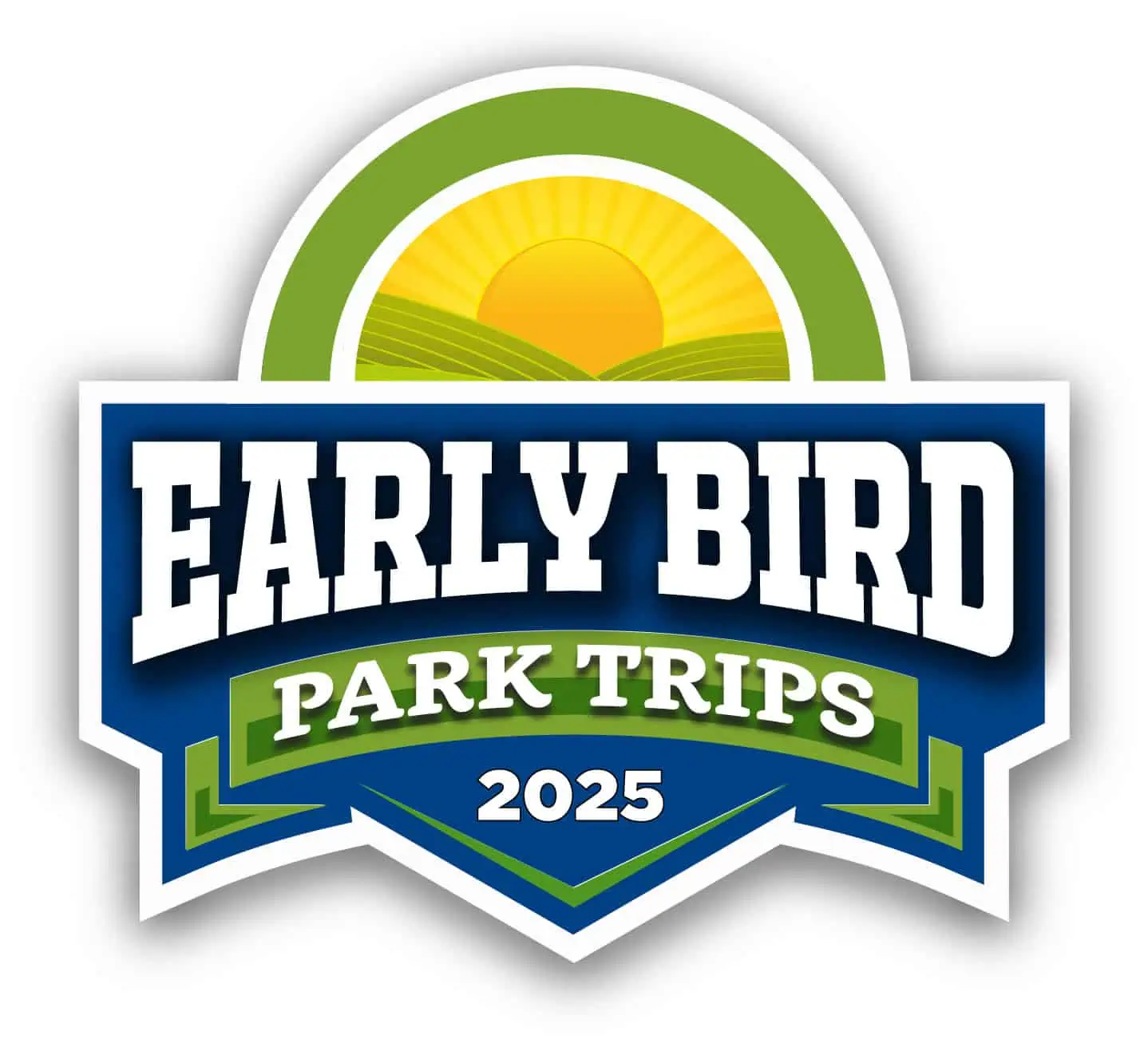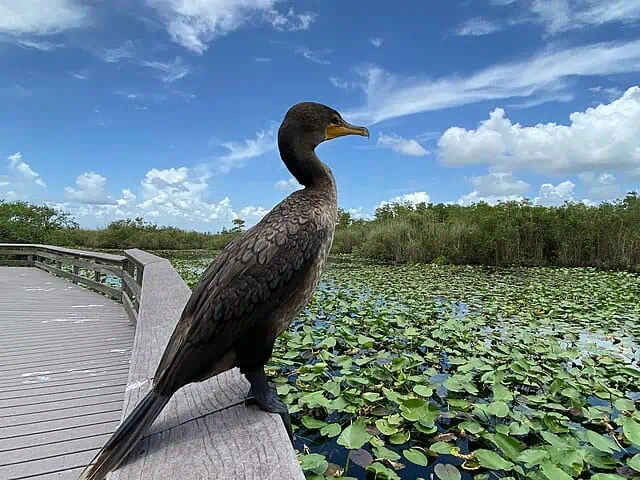Every new year is an invitation to new adventures. So where should you go in 2025?

There’s nothing more disappointing than going to an overcrowded national park. Instead of a life-restoring breath of fresh air, you get stuck in a three-hour bear jam, or have to dodge crowds of tourists on the trail.
There are so many OTHER incredible places in this country of ours, so this year we thought we’d highlight a handful from each region in the continental US: the West Coast (plus NV), Midwest, Mountain West, South and East Coast. We’ve polled the Parks Channel community and selected can’t-miss options for each region of the country. Our criteria: unforgettable destinations that are less crowded, less well-known (in most cases) and less difficult to secure the necessary permits.
The South abounds in wild experiences, from the swamps of the Everglades to the desert Texas ranchlands of the Rio Grande. If you like tall waterfalls, primeval swamps, wild rivers or floating on a sea, there’s a waterborne experience just waiting for you. Most of these parks are within easy driving distance of a major airport, if you don’t count the short 300-mile drive in Texas to Big Bend Ranch State Park. Best of all, these parks see only a fraction of the visitors that big western parks see, so you won’t have to wait in line just to get in. A great perk is southern cuisine—whether seafood, barbecue, or seasonal produce—it’s something best sampled at the source.
Have other suggestions? We want to hear them! A submission form is at the bottom of this post. And if your trip involves hotel stays, be sure to try out Parks Channel Member Travel. Free signup will give you access to discounts of up to 50%.
TENNESSEE
FALL CREEK FALLS STATE PARK. It’s popular with locals, but this gem gets nowhere near the 13+ million visitors who piled into the Great Smokies last year. Located on the scenic Cumberland Plateau, Fall Creek Falls State Park takes its name from its spectacular 256-foot waterfall — one of the tallest in the eastern United States. During the 1930s, New Deal-era workers from the Civilian Conservation Corps helped develop the park’s early trails and facilities, leaving a legacy of craftsmanship that visitors still enjoy today.
Things to Do:
Hiking & Biking: The park boasts over 56 miles of hiking trails, ranging from short, kid-friendly loops to more challenging backcountry treks.
Rock Climbing: Copperhead Rock and Buzzards Roost are popular destinations for all levels of climbers. Be sure to register in advance.
Fishing & Boating: Paddleboats, kayaks and canoes are available to rent from April through October.
Camping & Cabins: There are 202 campsites with water and electric hookups. The park also offers two- and three-bedroom cabins.
Nature & Adventure Programs: Ranger-led activities include programs on geology, astronomy, forest ecology and orienteering. You can request a program here.
FLORIDA
THE EVERGLADES. America’s biggest swamp. A sea of grass draining into the Gulf of Mexico, a subtropical wilderness the size of Los Angeles. It’s a paradise for wildlife enthusiasts with opportunities to see alligators, manatees, and a variety of bird species. Sawgrass marshes and hardwood hammocks give way to mangrove forests along the coast.
It’s one of the most unique ecosystems in the US, and this is not really a hiking trip – it’s best experienced in a boat. Just when you think you’ve seen it all, the Everglades can surprise you with a rare bird, a dangerous reptile or a massive fish.
Learn more from the videos on our Everglades National Park page.

TEXAS
BIG BEND RANCH STATE PARK. Big Bend Ranch State Park is a massive adventure waiting to be discovered. Spanning over 300,000 acres, it’s the largest state park in Texas. The state park gets less than 3% of the visitors of its big brother, Big Bend National Park, and offers the same dark skies and quality outdoor adventures. You can hike, mountain bike, and horseback ride to your heart’s content. The park’s rugged canyons, scenic vistas, and the Rio Grande offer breathtaking views and unique experiences. El Paso is the nearest gateway city and Parks Channel Member Travel has some great deals. Be aware that this is a spring, fall and winter destination though – summer is mighty hot!
• Horseback riding: How could you not, in Texas?! The park has 238 miles of multi-use trails. Feel free to bring your own horse, but if you’re unlucky like us, saddle up a rental.
• Birding: Along with having hundreds of resident species, the park is a stopping point for hundreds of migratory birds and a prime nesting site. Texas Parks and Wildlife has a fantastic guide for what to look for.
• Stargazing: Prepare to stay up late and be dazzled. This is a gold tier Dark Sky Park, as designated by the International Dark-Sky Association. Check out our post on the fantastic documentary The Stars at Night.
SOUTH CAROLINA
CONGAREE NATIONAL PARK. Despite record visitation over the last couple of years, Congaree remains an under-the-radar gem with only around 250,000 visitors a year, compared to 13 million for the Great Smokies. Home to the largest intact expanse of old-growth bottomland hardwood forest in the southeastern U.S., it’s a reminder of how stunning forests once were in the South. The best way to experience this is by canoe, floating among the towering trees and diverse wildlife that live in this unique environment. If you prefer a short hike, the park’s boardwalk trail offers an easy way to explore the swampy landscape. The gateway city is Columbia. Highlights:
• Wildlife Watching: lots of deer and bird species, including bald eagles, wood storks and American swallow-tail kites. If you’re lucky you might even spot an elusive bobcat. Check out our video, “South Carolina’s Wild Wonderland,” on our Congaree page.
• Canoeing and Kayaking: You can paddle through Cedar Creek or the Congaree River to explore the heart of the park, and a recreational paddle trail extends 50 miles from Columbia to Congaree. Be sure to check Canoe Trail Conditions before heading out.
• Camping and Backcountry: The best way to immerse yourself in an old-growth forest is to set up camp. Be sure to secure a reservation in advance.
• Fishing: Available and great fun anywhere in the park as long as you’re not within 25 feet of a manmade structure. Check out the park’s fishing page for more info.
Top photo of The Contrabando, a ghost town within Big Bend Ranch State Park, by Carol M. Highsmith.
So what did we miss? If you've got a suggestion for 2025 travel we'd love to hear about it!
Please log in to Parks Channel to submit your post.

